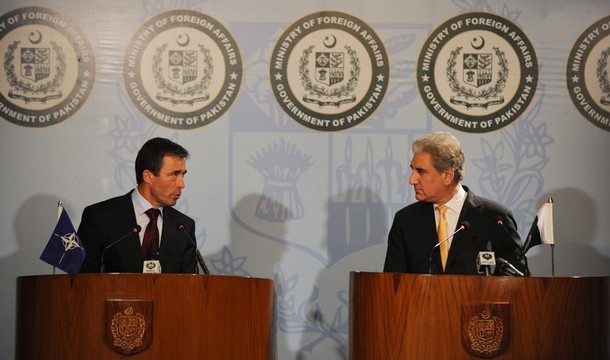
As the dog days of summer head toward autumn, NATO is in the process of what could be considered a major face lift.
To the degree the surgical analogy fits, there is no guarantee that the patient will be transformed into a more beautiful or handsome creature or that infection can be ruled out. Indeed, NATO faces existential questions about its future from defining the threat; requiring the need for consensus, i.e. unanimity of its 28 members to take action; to how its military commands are structured.
The paradox and dilemma are self-evident. What is the purpose of a defensive military alliance when the military enemy that caused its creation imploded 20 years ago? That is the question that NATO must readdress especially given the economic crises that tighten defense purses and a war in Afghanistan very unpopular with its populaces.
In preparation for a heads of government summit in Portugal this November, NATO is engaged in a flurry of activity. The secretary-general, former Danish Prime Minister Anders Fogh Rasmussen, is in the process of drafting the new Strategic Concept, which NATO’s leaders must endorse in Lisbon, to update the one approved in 1999 .
Clearly, the basis of any concept for the alliance rests on the dangers, threats and uncertainties that lie ahead. But there is no consensus on the nature of the dangers posed by Russia, the future of out-of-area operations as in Afghanistan, missile defense against putative Iranian and even North Korean rockets and new challenges from climate change to cyberattacks and protection of energy and infrastructure.
At the same time, given a rapidly descending Damoclean fiscal sword, NATO is embarked on a major reform campaign to cut costs and spending. Some 450 committees and sub-committees are in the process of being slashed to a fraction of that number. And the arcane and complicated matter of the NATO Command Structure, that is how NATO and its operational staffs are organized and operate, from the two strategic commands in Norfolk, Va., and Mons, Belgium, to individual unit deployments in and out of area, is on the table.
So here is some free advice to history’s most successful military alliance.
First, most populaces are apathetic or ignorant about NATO and, as noted, many are opposed to NATO intervention in Afghanistan. Hence, NATO has to be made relevant to the 21st century or become a relic of the past. Why not start with its name?
A look at the map shows that technically and geographically only five of the 28 members border on the North Atlantic. In a stretch you might add Spain and Portugal. That being the case, perhaps changing the name to the Atlantic, the Trans-Atlantic or the Euro-Atlantic Treaty Organization recognizes this reality of the 21st century in that a greater majority of members aren’t on the Atlantic Coast.
Second, as argued in earlier columns, NATO needs a means of demonstrating its relevance to increasingly cynical populaces. Calling this outreach, public diplomacy or strategic communications makes little difference. Unless publics are increasingly engaged and informed, NATO’s slow dissolution will continue.
Third, in constructing a new command structure for how it operates, trains and deploys its assigned forces and despite the constraints of requiring consensus to act, this structure must reflect 21st-century needs not those of the past.
Because there is no highly capable enemy facing NATO with even remotely equivalent sea, air, ground and space forces and because insurgencies and so-called small wars are the main challenge, a new command structure be designed accordingly using the latest technology with a back up capacity should a new version of the old Soviet Union emerge from the distant mists of an unpredictable future.
Of course, what happens in Afghanistan is the wild card and an asymmetrical one at that. It is difficult to see how a stunning victory can ever be achieved with victory parades and an enemy surrender on the equivalent of the battleship USS Missouri. Hence, damage limitation is perhaps the best outcome in which the alliance emerges relatively unscathed and whole.
The Strategic Concept might be able to do this if it is creative enough by creating a rough equivalent of the old flexible response formula of the late 1960s that provided the alliance sufficient elasticity to defuse the political tension between favoring greater reliance on nuclear deterrence hence less defense spending and those believing that the Soviet threat required greater conventional capability to maintain the strategic balance.
With the huge number of issues, crises and problems confronting every head of government in NATO, getting sufficient attention and focus now on the pending summit is critical. But if NATO is to be as relevant in the future as it has been in the past, we cannot afford to waste a second.
Harlan Ullman is Senior Advisor at the Atlantic Council, Chairman of the Killowen Group that advises leaders of government and business, and a frequent advisor to NATO. This article was syndicated by UPI. Photo credit: Getty Images.
Image: Rasmussen%20and%20Qureshi%20Jul%202010.jpg
